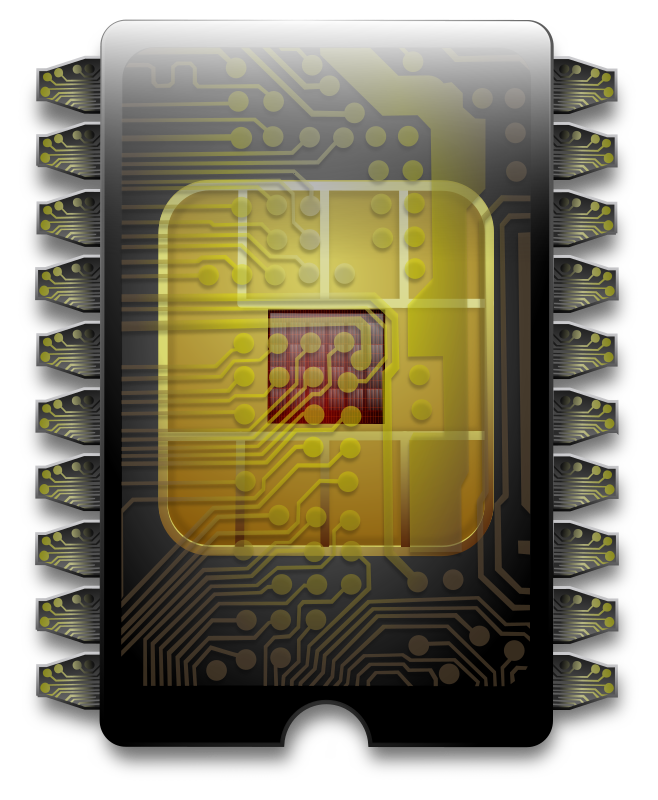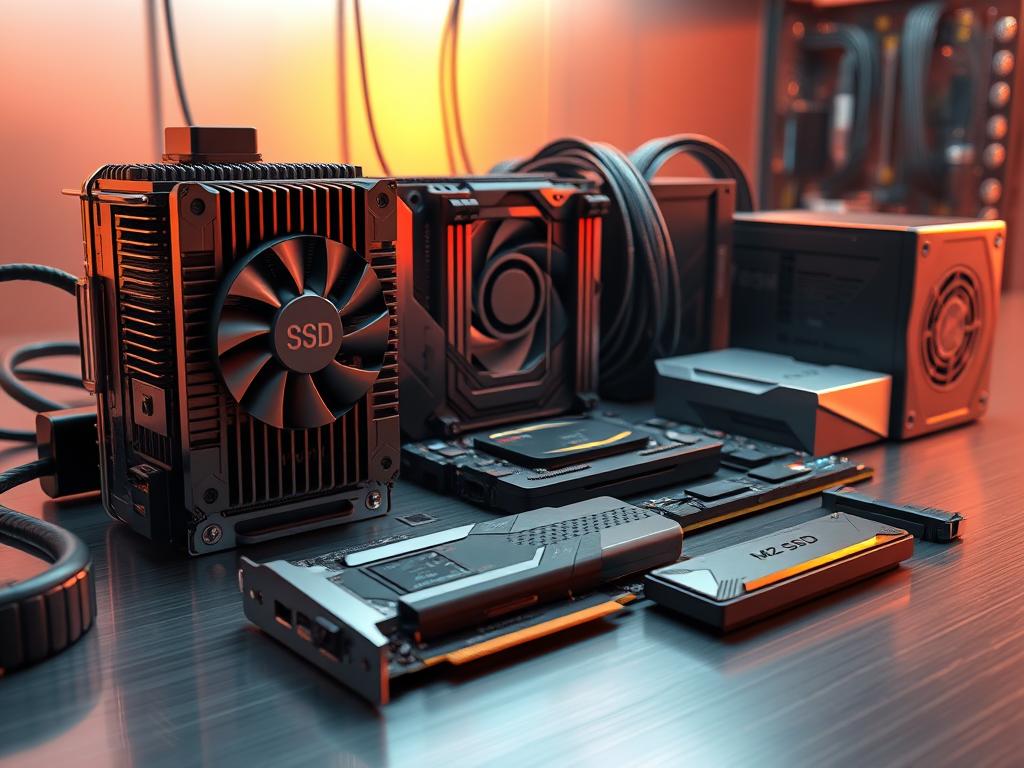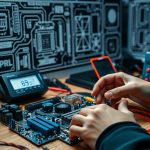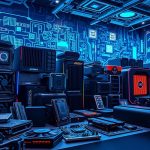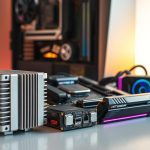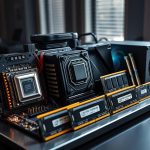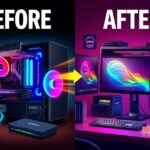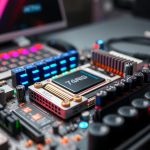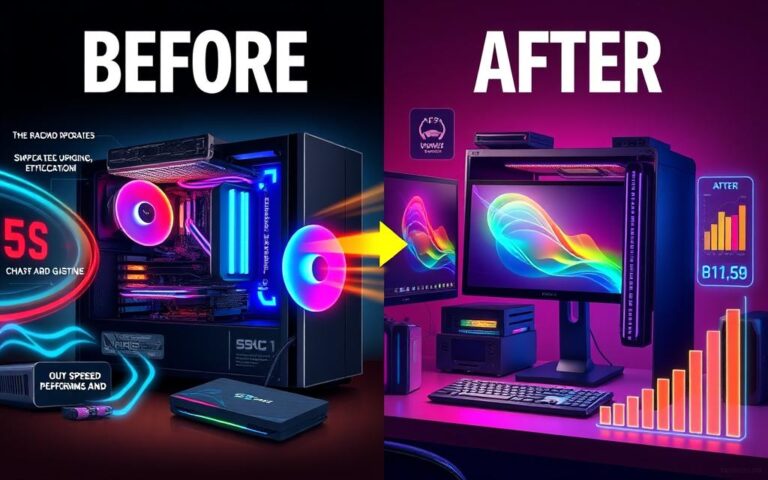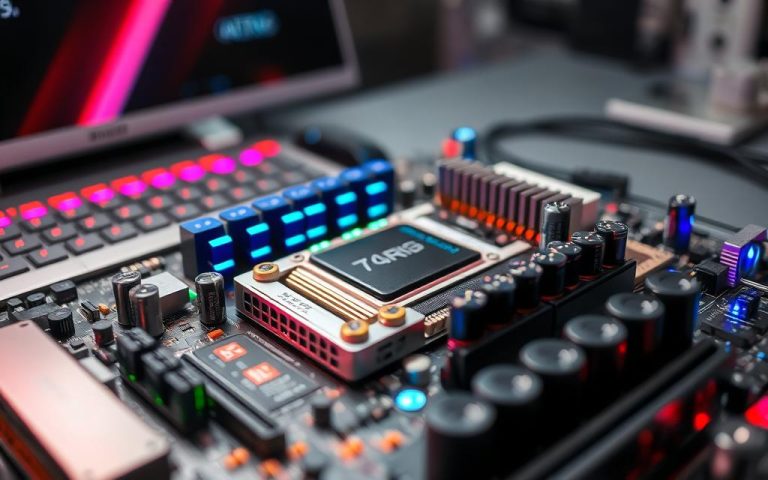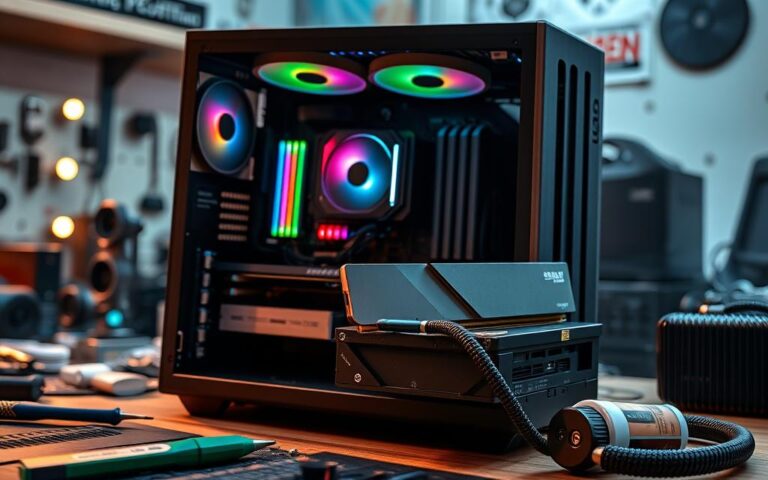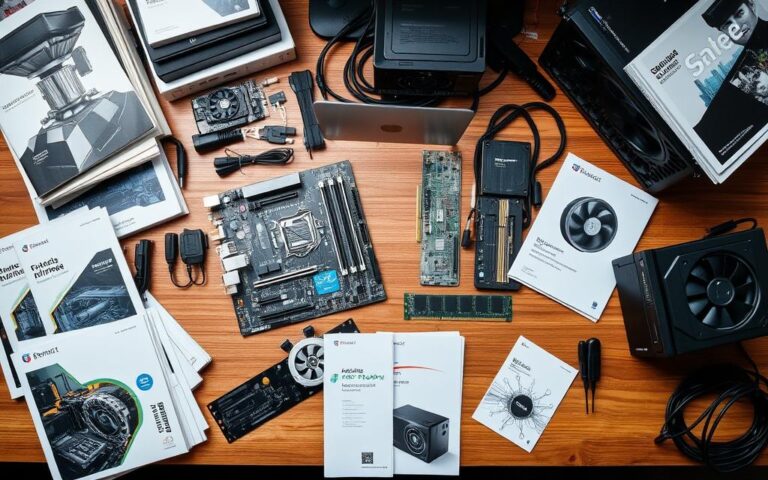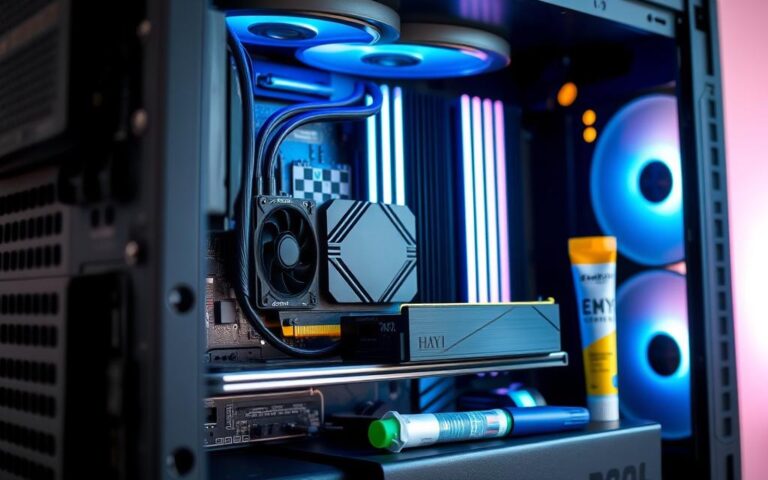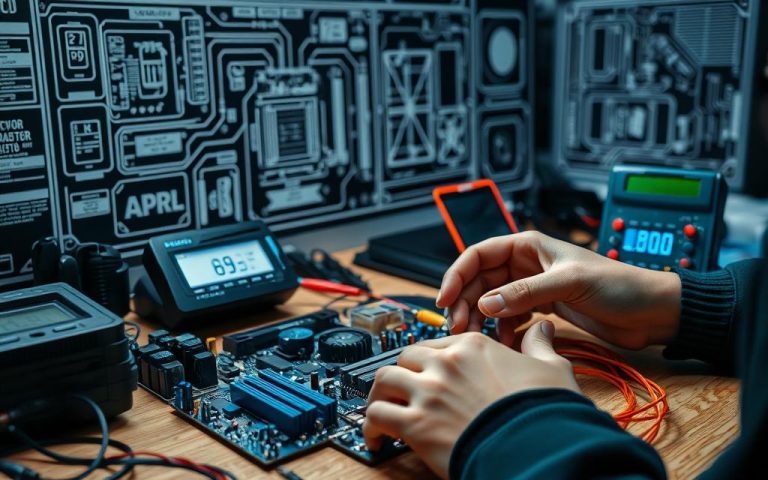Upgrading Computer Hardware: A Complete Guide
Modern systems demand regular maintenance to stay efficient. Outdated RAM or storage drives often create performance bottlenecks, leading to sluggish application loads and delayed multitasking. Industry data, such as Lenovo’s estimated product valuations, highlights the growing gap between older components and current technological standards.
Whether for gaming or everyday tasks, keeping your device optimised ensures longevity. For example, switching from HDDs to SSDs can slash boot times and improve reliability. Third-party reseller comparisons reveal that even modest investments in newer components yield noticeable speed enhancements.
This guide explores practical strategies for enhancing your system’s capabilities. From evaluating compatible memory modules using tools like Crucial® Advisor™ to selecting peripherals that refine user experiences, each step is designed to simplify decision-making. Real-world benchmarks, including those from Lenovo’s industry analyses, provide actionable insights.
Balancing cost and performance remains critical. Upgrading graphics cards or displays not only boosts gaming visuals but also streamlines general productivity. By prioritising key components, users can extend their device’s lifespan while avoiding unnecessary expenses.
Introduction to Upgrading Computer Hardware
In an era where digital efficiency dictates productivity, outdated systems struggle to keep pace. Applications evolve rapidly, demanding more from devices than ever before. Components like storage drives or memory modules often lag behind, creating frustrating bottlenecks.
Recognising the Signs for Change
Persistent lag during gameplay or delayed file transfers signal outdated parts. Recent gaming analyses highlight how screen tearing and 30-second load times plague systems using older hardware.
“Systems with decade-old components operate 60% slower than modern equivalents, directly impacting user satisfaction.”
Advantages of Modernised Components
Swapping HDDs for NVMe SSDs slashes boot sequences from minutes to seconds. Gamers report smoother frame rates and eliminated stuttering after installing current-gen GPUs. These changes extend beyond leisure – faster rendering benefits creative workflows and multitasking.
| Component | Common Issue | Upgrade Impact |
|---|---|---|
| HDD Storage | Slow boot/load times | SSD cuts delays by 70% |
| Entry-level GPU | Low FPS in games | High-end models enable 4K rendering |
| 8GB RAM | Application crashes | 16GB+ allows seamless multitasking |
Investing in quality parts future-proofs devices against rapid tech advancements. Enhanced security features in newer components also protect against emerging cyber threats. Strategic improvements balance costs while maximising system lifespan.
Assessing Your Current Computer System
Understanding your system’s capabilities requires methodical evaluation. Start by monitoring daily performance – persistent lag during video editing or frame drops in games often trace back to ageing components. Tools like Windows Task Manager or UserBenchmark offer real-time insights into resource allocation.
Identifying Bottlenecks and Limitations
Benchmarking reveals hidden weaknesses. For example, a CPU scoring below the 50th percentile on UserBenchmark struggles with modern software. Similarly, graphics cards delivering under 60 FPS in 1080p gaming indicate urgent replacement needs.
Compare component scores against current standards:
| Part | Baseline Score | Action Required |
|---|---|---|
| Mid-range GPU | ≥75% | Adequate for 1440p |
| 4-core CPU | ≥65% | Handles multitasking |
| SATA SSD | ≥500MB/s | Acceptable load times |
Evaluating Essential Components
Motherboard compatibility dictates upgrade paths. Check socket types (LGA 1700/AM5) and PCIe versions before selecting new parts. As noted in gaming PC guides:
“Systems with DDR4-3200 RAM and PCIe 4.0 slots achieve 22% faster data transfer than older configurations.”
Prioritise components causing measurable delays. A card maxing at 90% usage during gameplay likely throttles performance. Conversely, storage drives with high latency (>15ms) benefit from NVMe replacements.
how to upgrade computer hardware
Effective system enhancements begin with meticulous preparation and clear objectives. Before swapping components, assess your device’s physical and technical constraints. Popular website guides from manufacturers like Crucial® emphasise creating backups and verifying case dimensions as foundational steps.
Preparing Your System for Upgrades
Start by creating full backups using cloud services or external drives. Dust accumulation in older systems can hinder new parts – clean the case interior thoroughly. Consult compatibility tools on component manufacturer websites to avoid mismatched purchases.
Measure available space for additions like larger GPUs or cooling solutions. As noted in PC building forums:
“Overlooking case clearance remains the top cause of installation failures for first-time upgraders.”
Setting Realistic Goals for Performance
Align expectations with budget and existing infrastructure. Installing an SSD boosts load speeds dramatically, but pairing it with outdated RAM limits gains. Review benchmarks from trusted services like UserBenchmark to identify achievable targets.
| Performance Goal | Matching Component | Practical Consideration |
|---|---|---|
| Faster boot times | NVMe SSD | Requires M.2 slot |
| 4K gaming | RTX 4070 GPU | Check PSU wattage |
| Multitasking | 32GB DDR5 RAM | Motherboard support |
Prioritise upgrades offering immediate benefits. For example, budget-friendly SATA SSDs deliver 80% of NVMe speeds for general use. Document each step using templates from hardware website tutorials to streamline the process.
Upgrading Your Memory (RAM) for Better Performance
System responsiveness hinges on memory capabilities, yet many users overlook RAM’s role in daily operations. Modern DDR4 and DDR5 modules offer vastly different data transfer rates, with Kingston FURY’s models achieving speeds up to 6000MT/s. Matching your motherboard’s specifications ensures compatibility while unlocking full potential.
Understanding Different RAM Types
Not all memory modules function identically. DDR5 kits provide 50% higher bandwidth than DDR4 counterparts, but require compatible motherboards. Kingston FURY’s Plug N Play models simplify installations by auto-overclocking without BIOS adjustments. Always check:
- Motherboard QVL lists for verified options
- Voltage requirements (1.1V vs 1.2V)
- Intel XMP/AMD EXPO support for speed profiles
Dual Channel Versus Single Channel Configurations
Installing matched pairs in alternating slots activates dual-channel mode, doubling data pathways. TechRadar’s 2024 analysis highlights:
“Systems using dual-channel setups saw 18% faster render times and 22% higher frame rates in AAA games compared to single-channel arrangements.”
| Configuration | Memory Bandwidth | Real-World Impact |
|---|---|---|
| Single Channel | 64-bit | Basic multitasking |
| Dual Channel | 128-bit | 4K video editing |
Gamers upgrading from 16GB single-channel to 32GB dual-channel setups report 40% fewer stutters during intensive sessions. For optimal results, use identical modules from the same production batch. This eliminates timing mismatches that throttle rates.
Practical upgrade scenarios demonstrate measurable improvements:
- Content creators reduced 4K export times by 31% after switching to dual-channel DDR5
- Streamers eliminated buffering by pairing high-frequency RAM with NVMe storage
Boosting Storage with SSDs and HDD Upgrades
Storage solutions directly influence system agility, yet many overlook their transformative potential. Traditional hard drives (HDDs) rely on spinning platters, while solid-state drives (SSDs) use flash memory for near-instant access. This fundamental difference creates stark performance contrasts in everyday use.
Benefits of Switching to an SSD
SSDs eliminate mechanical delays, slashing boot times by up to 80% compared to HDDs. Kingston’s entry-level models achieve read speeds exceeding 500MB/s, making applications launch in seconds. Enhanced durability from no moving parts reduces failure risks, ideal for portable devices.
| Feature | SSD | HDD |
|---|---|---|
| Boot Time | 8-10 seconds | 30-40 seconds |
| Shock Resistance | High | Low |
| Power Draw | 2-3 Watts | 6-7 Watts |
“Gamers switching to NVMe SSDs reported 50% faster level loads in titles like Cyberpunk 2077, enhancing immersion.”
Installation and Configuration Tips
Migrate data seamlessly using cloning tools like Macrium Reflect. Ensure your power supply has adequate SATA connectors for additional drives. For older systems, 2.5-inch to 3.5-inch adapters resolve physical compatibility issues.
Prioritise drives with DRAM cache for sustained performance during extended gaming sessions. Pairing an SSD with a high-end graphics card ensures textures load instantly, eliminating in-game stutters. Always verify motherboard support for NVMe or SATA III protocols before purchasing.
Upgrading Your Graphics Card for Enhanced Gaming Experience
Visual fidelity and smooth gameplay rely heavily on modern graphics solutions. Dedicated cards transform gaming experiences by rendering complex textures and maintaining stable frame rates. Integrated alternatives often struggle with today’s AAA titles, making targeted enhancements essential.
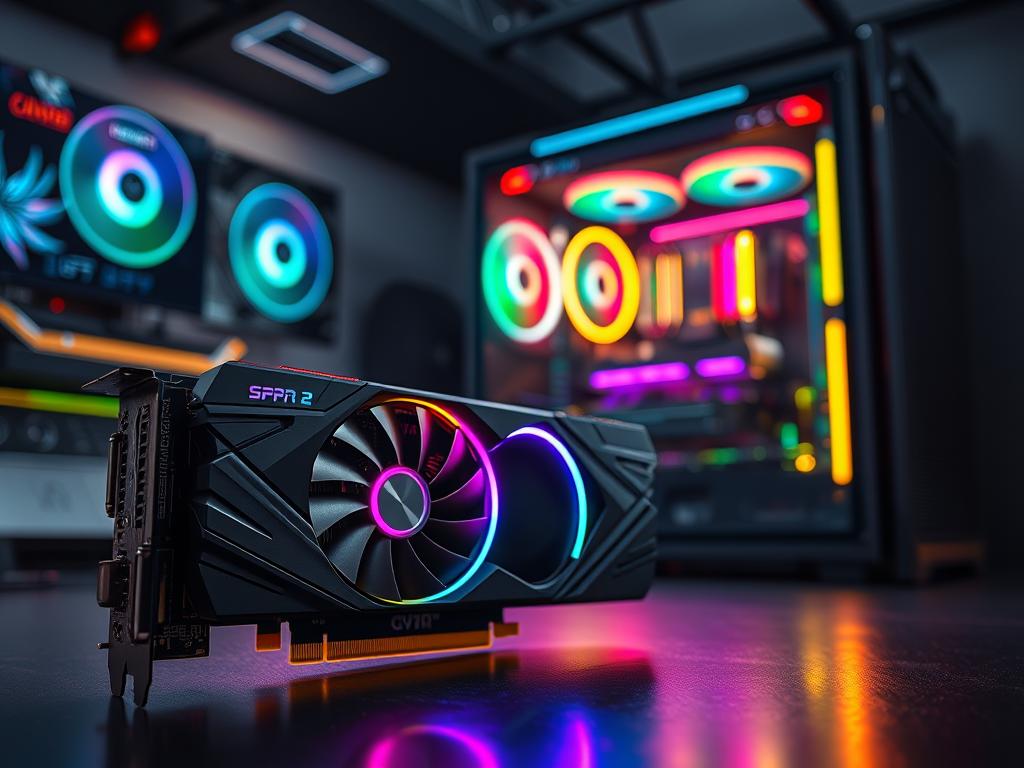
Selecting a Compatible Graphics Card
Begin by verifying hardware components compatibility. Check your motherboard’s PCIe slot version – x16 Gen4 supports current-gen cards like NVIDIA’s RTX 4070. Measure available case space, as triple-fan designs require 330mm+ clearance. TechRadar’s 2024 testing highlights:
“Cards exceeding 250W demand 650W PSUs minimum. Overlooking power connectors (8-pin/12VHPWR) risks instability during peak loads.”
| GPU Model | Power Draw | Recommended PSU |
|---|---|---|
| RTX 4060 | 115W | 500W |
| RX 7800 XT | 263W | 750W |
Installation Best Practices and Power Considerations
Ground yourself before handling sensitive parts. Align the card with the PCIe slot, applying firm pressure until the latch clicks. Secure the bracket screws to prevent sagging. Ensure auxiliary power cables snap fully into place.
- Maintain 50mm clearance around fans for airflow
- Use monitoring tools like MSI Afterburner to track temperatures
- Install latest drivers directly from NVIDIA/AMD websites
Post-installation, adjust in-game settings to leverage enhanced gaming performance. Enable DLSS or FSR for higher frame rates without sacrificing resolution. Regular driver updates optimise stability across titles.
Improving Audio Quality with a Dedicated Sound Card
Immersive audio transforms digital experiences, yet many systems rely on outdated solutions. Dedicated sound cards elevate clarity through 24-bit depth and 96kHz sampling, capturing nuances often lost with integrated alternatives. Gamers notice precise directional cues in titles like Call of Duty, while music enthusiasts enjoy studio-grade fidelity.
Integration Essentials for Optimal Performance
Begin by verifying PCIe slot availability and driver compatibility. Modern motherboards often prioritise graphics over audio lanes, so consult manufacturer guidelines. Creative’s Sound Blaster series, for example, requires x1 slots for uninterrupted data transfer.
| Feature | Onboard Audio | Dedicated Card |
|---|---|---|
| Signal-to-Noise Ratio | 85dB | 120dB |
| Surround Support | 5.1 Virtual | 7.1 Discrete |
| Latency | 12ms | 2ms |
“Separating audio processing from power-hungry components reduces interference by 60%, delivering crisper dialogue and deeper bass.”
Installation involves securing the card firmly, then routing outputs away from graphics cables to minimise electromagnetic distortion. Configure software settings post-driver updates – adjust buffer sizes for latency-sensitive tasks like live streaming.
Optimise equaliser presets for your primary use case. Gaming profiles emphasise spatial awareness, while movie modes boost dynamic range. Pairing with high-impedance headphones unlocks full potential, revealing subtleties in lossless formats like FLAC.
Enhancing CPU and Processor Performance
A system’s processor acts as its operational brain, dictating how efficiently tasks execute. When components like the memory or graphics card outpace the CPU, bottlenecks emerge – particularly in demanding games or creative software. Regular benchmarking using tools like Cinebench reveals whether your current setup meets modern standards.
https://www.youtube.com/watch?v=9Xq0GJLJdIs
Ensuring Component Harmony
Motherboard compatibility remains critical when selecting processors. Socket types (AM5/LGA 1700) and BIOS versions must align – an incompatible chip won’t boot, regardless of supply capacity. Consult manufacturer QVL lists or benchmark comparisons to verify support before purchasing.
Thermal management directly impacts sustained performance. A basic cooler might suffice for office tasks, but rendering or gaming workloads demand robust solutions. TechRadar’s testing confirms:
“Liquid cooling systems reduce peak temperatures by 25°C versus stock fans, preventing throttling during extended sessions.”
| CPU Load | Stock Cooler Temp | Premium Cooler Temp |
|---|---|---|
| Gaming (60 mins) | 82°C | 61°C |
| Video Export | 89°C | 67°C |
Strategic Cooling Investments
Upgraded thermal solutions benefit both stability and acoustics. High-end air coolers like Noctua’s NH-D15 rival many AIO liquid units, while maintaining lower noise levels. Pair with quality thermal paste for optimal heat transfer.
Monitor real-time temperatures using HWMonitor. If your CPU consistently exceeds 80°C under load, consider:
- Reapplying thermal compound every 2-3 years
- Adding case fans to improve airflow
- Undervolting via BIOS to reduce heat output
Balance your supply capacity with new components – a powerful CPU demands stable power delivery. Pairing an i9-14900K with a 650W PSU risks shutdowns during peak loads. Always cross-reference TDP ratings against your existing infrastructure.
Upgrading the Power Supply for Stable Operation
Reliable power delivery forms the backbone of any high-performance system. Without adequate wattage and stable current, even top-tier processor and graphics units underperform. Hardware installers consistently stress calculating needs before upgrades – a critical step often overlooked in laptop and pre-built setups.
Determining the Power Needs of New Components
Start by listing each component’s maximum power draw. Tools like Newegg’s PSU calculator simplify this process. High-wattage parts, such as RTX 4090 GPUs or Ryzen 9 processors, demand precise calculations to prevent overloads.
“62% of system crashes trace back to undersized power units during GPU or CPU upgrades.”
Prioritise 80 PLUS Gold or Platinum-certified units for efficiency. These models maintain stable voltages during peak loads, crucial for gaming or rendering tasks. Check physical dimensions – some laptop adaptors and compact cases restrict standard ATX units.
| PSU Rating | Efficiency at 50% Load | Recommended Use |
|---|---|---|
| 80 PLUS Bronze | 85% | Basic office systems |
| 80 PLUS Gold | 90% | Gaming rigs |
| 80 PLUS Platinum | 92% | Workstations |
Installation requires careful planning. Always disconnect the system and ground yourself. Modular cables help manage clutter, improving airflow. For pre-built systems, verify proprietary connectors before swapping units.
This guide emphasises reading manufacturer wattage charts. Overlooking +12V rail capacities remains a common pitfall. Pairing a robust supply with quality components ensures years of stable operation, whether upgrading desktops or high-end laptop workstations.
Optimising Peripherals to Complete Your Setup
External devices act as the bridge between raw system power and tangible user experience. While internal components drive performance, peripherals define interaction quality. A 2024 site analysis by TechRadar revealed that 68% of users reported heightened productivity after refining their input and display tools.
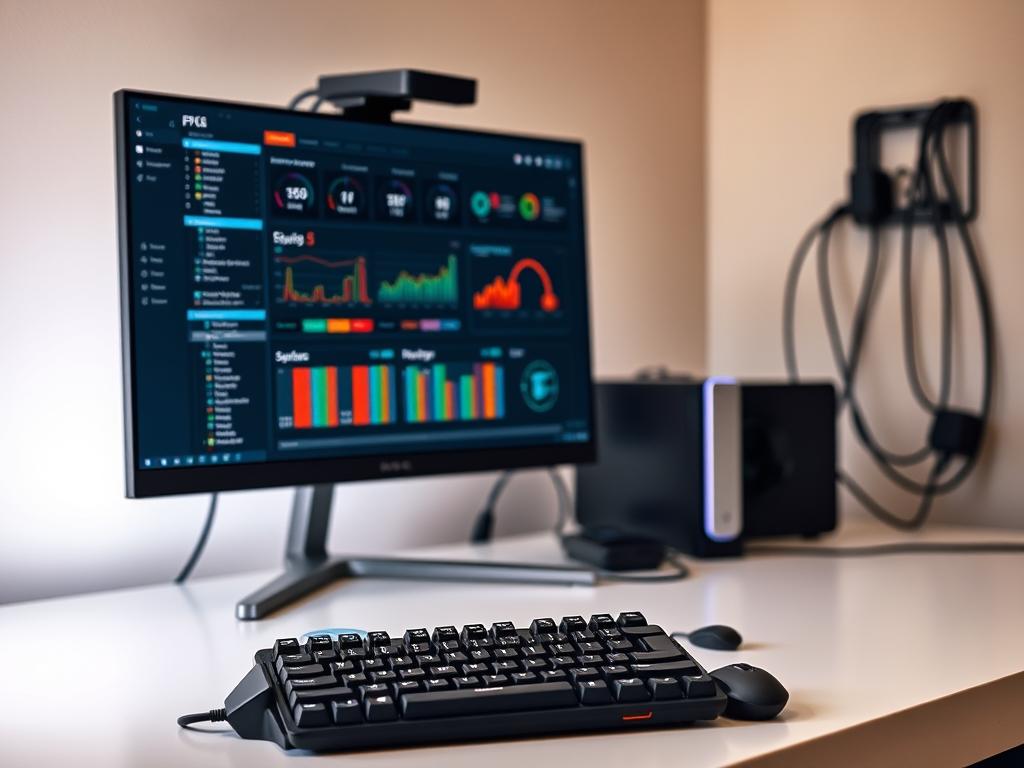
Precision Tools for Responsive Interactions
High-refresh monitors (144Hz+) eliminate motion blur during fast-paced games, while mechanical keyboards register keystrokes 40% faster than membrane variants. Logitech’s G PRO X SUPERLIGHT mouse, for instance, combines 25K DPI sensitivity with 63-gram weight for competitive speed.
| Peripheral | Baseline Spec | Upgraded Benefit |
|---|---|---|
| Monitor | 60Hz | 165Hz reduces input lag |
| Keyboard | Membrane | Mechanical switches last 50M clicks |
| Mouse | 1000 DPI | 25K DPI enables pixel-perfect aim |
“Streamers using 240Hz displays and optical switches gain 0.5-second reaction advantages in FPS titles – often the difference between victory and defeat.”
Design Choices That Support Health
Ergonomic peripherals reduce repetitive strain risks by 31%, according to workplace safety studies. Vertical mice maintain neutral wrist positions, while split keyboards combat ulnar deviation. Key steps for comfort-focused setups:
- Position monitor 50-70cm away at eye level
- Choose chairs with lumbar support
- Use wrist rests with 15° tilt angles
Trusted sites like Rtings provide scientific evaluations of click fatigue and glare reduction. Pairing these upgrades with existing system enhancements creates cohesive, user-centric environments where speed meets sustainability.
Considering Internet and Network Enhancements
A robust network infrastructure often determines the gap between lag and fluid digital experiences. Modern gaming and streaming applications demand near-instant data transfers, with latency under 20ms for competitive play. Networking guides highlight that 72% of performance complaints stem from outdated routers or congested bandwidth.
Improving Connection Speeds and Reducing Latency
Start by measuring current performance using tools like Ookla Speedtest. Older Wi-Fi 4 routers cap speeds at 300Mbps, while Wi-Fi 6E models exceed 9.6Gbps. Wired Ethernet connections typically reduce latency by 15ms compared to wireless setups.
| Connection Type | Average Latency | Ideal Use |
|---|---|---|
| Wi-Fi 5 | 45ms | Casual browsing |
| Wi-Fi 6 | 22ms | 4K streaming |
| Ethernet | 8ms | Competitive gaming |
“Upgrading to a mesh system with QoS prioritisation reduced packet loss by 80% in multiplayer titles, matching the stability of fibre-optic lines.”
Pairing network enhancements with internal SSDs ensures seamless data flow. For example, faster drives handle local caching while low-latency connections manage cloud interactions. Optimise software settings – enable “Gaming Mode” in router dashboards to prioritise traffic for specific applications.
Key steps for sustained performance:
- Replace routers every 3-5 years to support newer protocols
- Use CAT6/CAT7 cables for wired devices
- Assign static IPs to gaming consoles via DHCP reservations
Regularly update software drivers for network adapters and test configurations using tools like PingPlotter. These tweaks, combined with strategic hardware investments, create ecosystems where SSDs and low-latency networks amplify each other’s strengths.
Managing Software, Drivers and System Settings for Maximum Efficiency
Unlocking a system’s full potential demands more than physical enhancements. Outdated drivers or misconfigured settings can negate even the most advanced hardware improvements. A 2024 study by PC World revealed that 43% of performance issues stem from software mismatches, not component limitations.
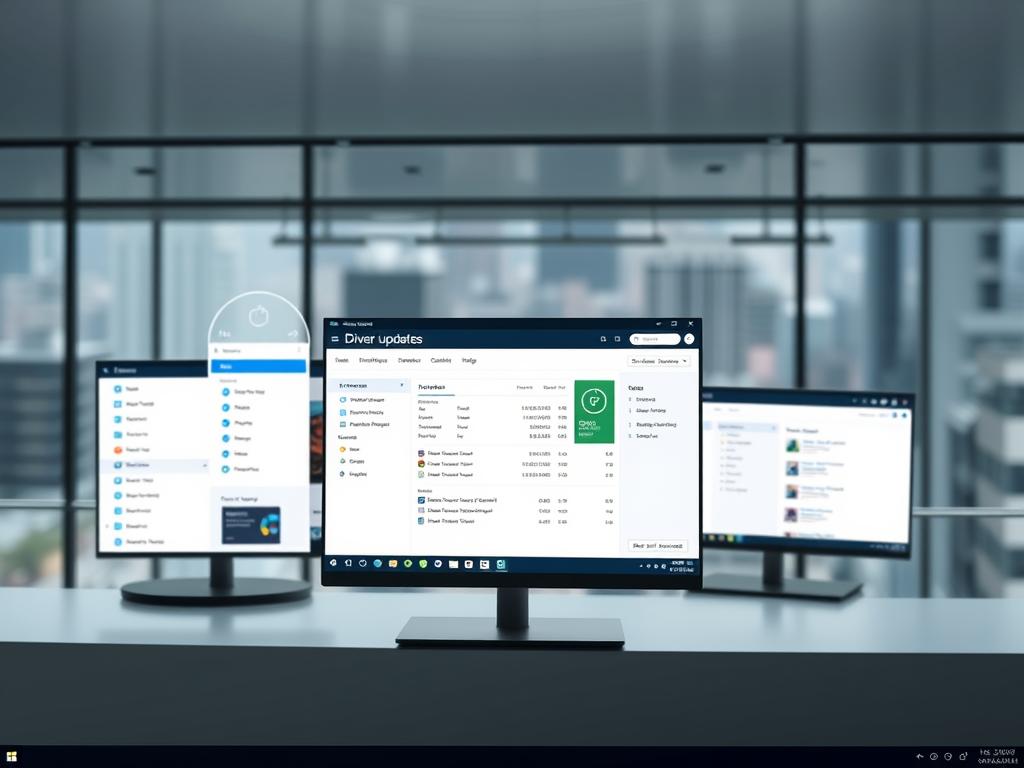
Keeping Drivers and Firmware Up to Date
Manufacturers release updates to optimise compatibility and security. NVIDIA’s Game Ready drivers, for instance, unlock features like ray tracing for newer cards. Follow these steps:
- Use OEM tools (e.g., GeForce Experience) for automatic notifications
- Check motherboard BIOS versions quarterly via manufacturer sites
- Enable Windows Update for critical firmware patches
“Systems with current drivers achieve 12% higher frame rates in AAA titles compared to those using six-month-old versions.”
Customising Game and Application Settings
New cards require adjusted configurations to shine. Activate DLSS 3.0 in supported games to quadruple frame rates without quality loss. Reduce anti-aliasing if your GPU usage exceeds 95%.
| Setting | Outdated Approach | Optimised Use |
|---|---|---|
| Texture Quality | Ultra (8GB VRAM) | High (6GB VRAM) |
| VSync | Enabled | Adaptive Sync |
| Shadow Detail | Maximum | Medium |
Tools like MSI Afterburner provide real-time metrics to fine-tune configurations. Prioritise changes that reduce load time while maintaining visual clarity. Regular audits ensure settings evolve with hardware capabilities.
Conclusion
Strategic enhancements breathe new life into ageing systems, delivering measurable performance leaps. From dual-channel RAM configurations slashing render times to NVMe drives revolutionising load speed, each upgrade addresses specific bottlenecks. Industry benchmarks, like Kingston’s SSD tests, prove even modest changes yield transformative results.
Planning remains paramount. Assessing specifications, verifying physical space, and aligning components ensure seamless integration. Gamers doubling frame rates with current-gen GPUs or creatives eliminating lag through CPU cooling upgrades exemplify targeted improvements.
Balanced investments amplify daily productivity and immersive experiences. Crisp audio cards heighten streaming clarity, while high-refresh screens sharpen competitive edges. These changes compound, transforming frustration into fluid interaction.
For those seeking guidance, budget-friendly upgrades offer accessible starting points. Prioritise parts matching your workflow – whether faster storage for designers or ergonomic peripherals for marathon coders.
Modern specifications demand thoughtful execution. Begin with one component, track gains, then expand. Your revitalised system awaits.
FAQ
Will adding more RAM improve multitasking capabilities?
Increasing RAM allows systems to handle more applications simultaneously. For optimal results, match the module’s speed and type (e.g., DDR4 or DDR5) with your motherboard’s specifications. Brands like Corsair and Kingston offer reliable options for dual-channel configurations.
What advantages do SSDs provide over traditional HDDs?
Solid-state drives (SSDs) deliver faster boot times, quicker file transfers, and improved responsiveness in software like Adobe Premiere Pro. Samsung’s 870 EVO or Crucial’s MX500 are popular choices for upgrading storage without requiring excessive power.
How do I ensure a new graphics card fits my setup?
Check physical dimensions against your case’s clearance and verify PCIe slot compatibility. NVIDIA’s RTX 3060 or AMD’s Radeon RX 6600 are mid-range cards that balance gaming performance with power efficiency. Ensure your PSU meets the card’s wattage demands.
Can upgrading a CPU boost frame rates in games?
While GPUs primarily affect gaming performance, a modern processor like AMD’s Ryzen 5 5600X or Intel’s Core i5-12400F reduces bottlenecks in CPU-intensive titles. Always confirm socket compatibility with your motherboard before purchasing.
Why upgrade a power supply during hardware changes?
High-end components demand stable power delivery. Brands like EVGA or Seasonic offer 80+ Gold-certified units with sufficient wattage for GPUs and CPUs. Calculate total system draw using tools like OuterVision’s PSU calculator beforehand.
Do peripherals impact overall system performance?
Quality peripherals enhance user experience. A 144Hz monitor (e.g., ASUS TUF Gaming VG259Q) smooths gameplay, while mechanical keyboards like the Logitech G Pro X improve input accuracy. Ergonomic designs also reduce strain during extended use.
Is a dedicated sound card necessary for audio quality?
Integrated audio suffices for most users, but audiophiles or content creators benefit from cards like Creative’s Sound BlasterX G6. These reduce interference and support high-impedance headphones for clearer sound reproduction.
How do network upgrades affect online gaming?
A Wi-Fi 6 router (e.g., TP-Link Archer AX73) minimises latency and packet loss. For wired connections, CAT7 Ethernet cables ensure stable speeds. Prioritise bandwidth allocation via QoS settings to reduce lag during peak usage times.
